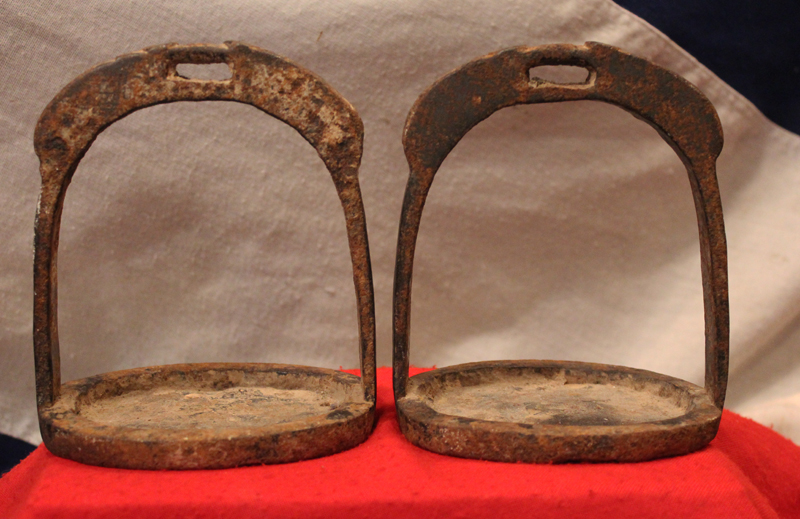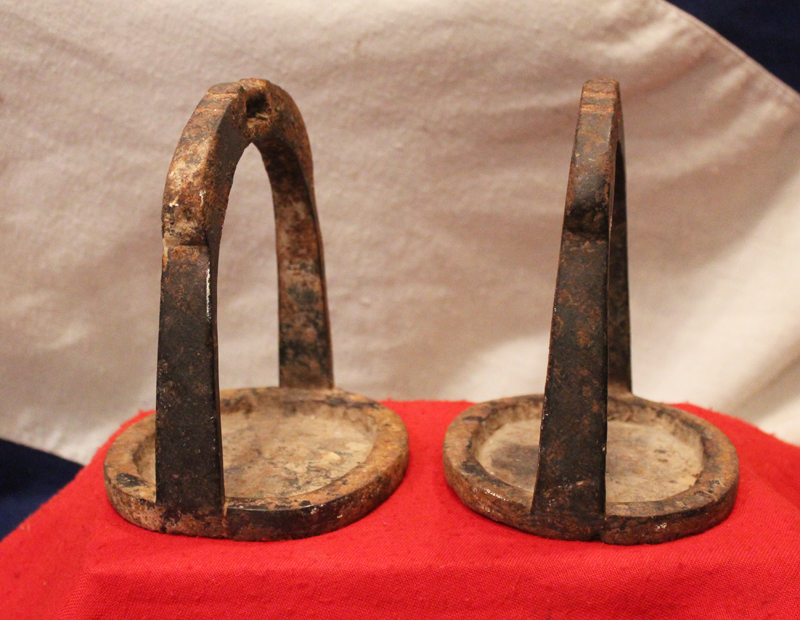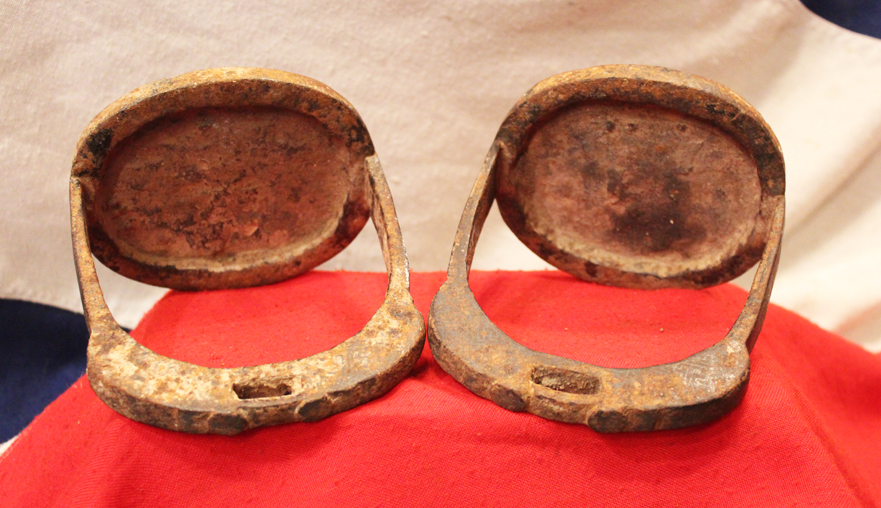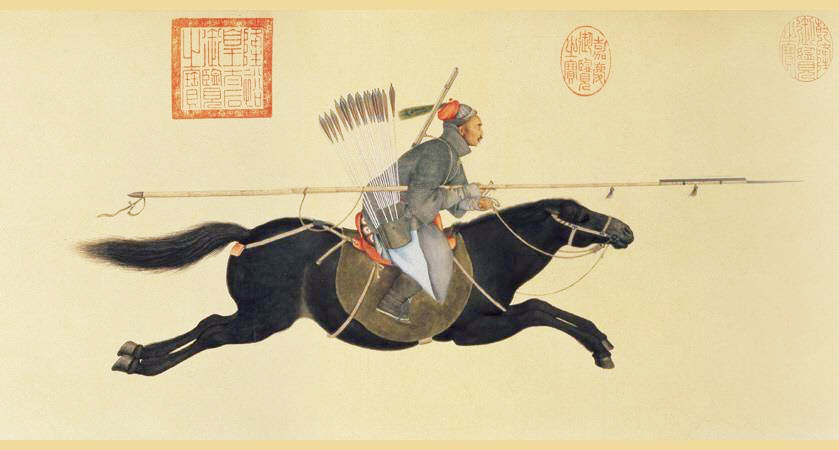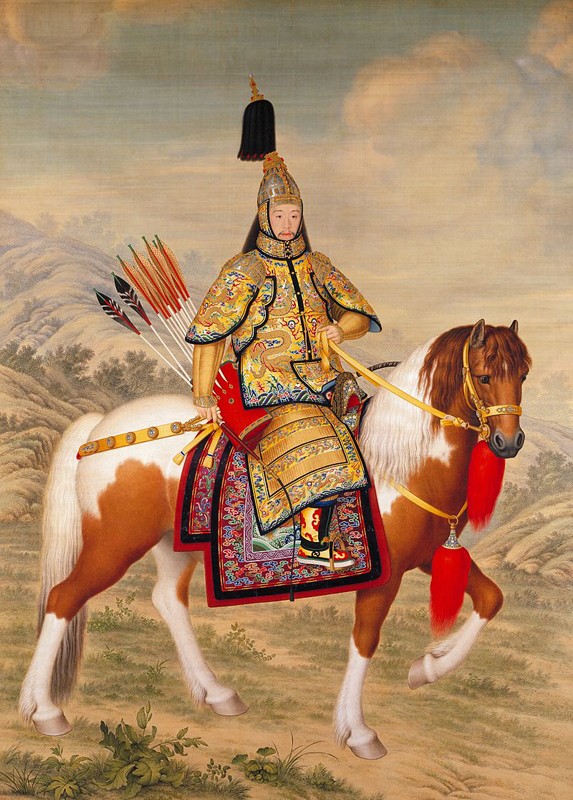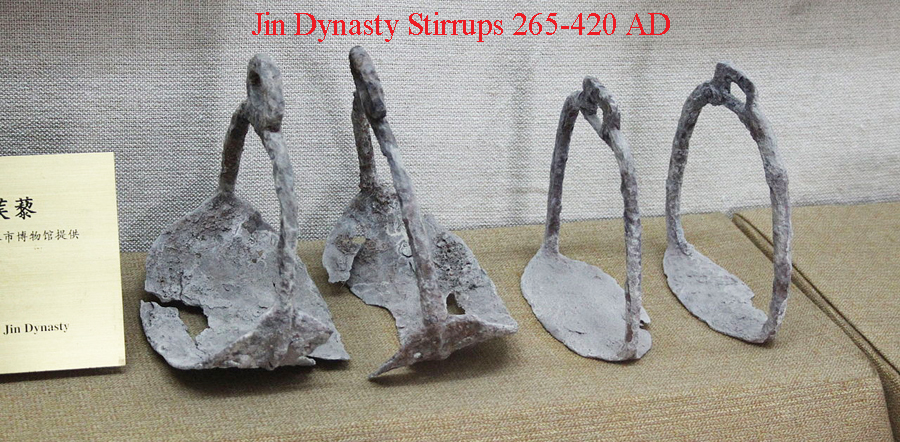A Pair of late Ming to Early Ching Dynasty 16th to 17th Century Cavalry Stirrups
In antiquity, the earliest foot supports consisted of riders placing their feet under a girth or using a simple toe loop. Later, a single stirrup was used as a mounting aid, and paired stirrups appeared after the invention of the treed saddle. The stirrup was invented in China in the first few centuries AD and spread westward through the nomadic peoples of Central Eurasia. The use of paired stirrups is credited to the Chinese Jin Dynasty and came to Europe during the Middle Ages. Some argue that the stirrup was one of the basic tools used to create and spread modern civilization, possibly as important as the wheel or printing press. The stirrup, which gives greater stability to a rider, has been described as one of the most significant inventions in the history of warfare, prior to gunpowder. As a tool allowing expanded use of horses in warfare, the stirrup is often called the third revolutionary step in equipment, after the chariot and the saddle. The basic tactics of mounted warfare were significantly altered by the stirrup. A rider supported by stirrups was less likely to fall off while fighting, and could deliver a blow with a weapon that more fully employed the weight and momentum of horse and rider. Among other advantages, stirrups provided greater balance and support to the rider, which allowed the knight to use a sword more efficiently without falling, especially against infantry adversaries. The Ming Dynasty ruled China from 1368 to 1644 A.D., during which China’s population would double. Known for its trade expansion to the outside world that established cultural ties with the West, the Ming Dynasty is also remembered for its drama, literature and world-renowned porcelain.
RISE OF THE MING DYNASTY
The Ming Dynasty ruled China from 1368 to 1644 A.D., during which China’s population would double. Known for its trade expansion to the outside world that established cultural ties with the West, the Ming Dynasty is also remembered for its drama, literature and world-renowned porcelain.
Ming dynasty founder Emperor Taizu, or Zhu Yuanzhang, was born into poverty, and spent part of his youth wandering the country after his parents died following a series of natural disasters centered around the Yellow River.
The Qing [or Ching] dynasty, officially the Great Qing, also called the Qing Empire by itself or the Manchu dynasty by foreigners, was the last imperial dynasty of China, established in 1636 and ruling China from 1644 to 1912 with a brief, abortive restoration in 1917. It was preceded by the Ming dynasty and succeeded by the Republic of China. The Qing multi-cultural empire lasted almost three centuries and formed the territorial base for the modern Chinese state. After conquering "China proper", the Manchus identified their state as "China", and referred to it as Dulimbai Gurun in Manchu (Dulimbai means "central" or "middle," gurun means "nation" or "state"). The emperors equated the lands of the Qing state (including present-day Northeast China, Xinjiang, Mongolia, Tibet and other areas) as "China" in both the Chinese and Manchu languages, defining China as a multi-ethnic state, and rejecting the idea that "China" only meant Han areas. The Qing emperors proclaimed that both Han and non-Han peoples were part of "China". They used both "China" and "Qing" to refer to their state in official documents, international treaties (as the Qing was known internationally as "China" or the "Chinese Empire") and foreign affairs, and "Chinese language" (Dulimbai gurun I bithe) included Chinese, Manchu, and Mongol languages, and "Chinese people" referred to all subjects of the empire. In the Chinese-language versions of its treaties and its maps of the world, the Qing government used "Qing" and "China" interchangeably.
Code: 20708
975.00 GBP

